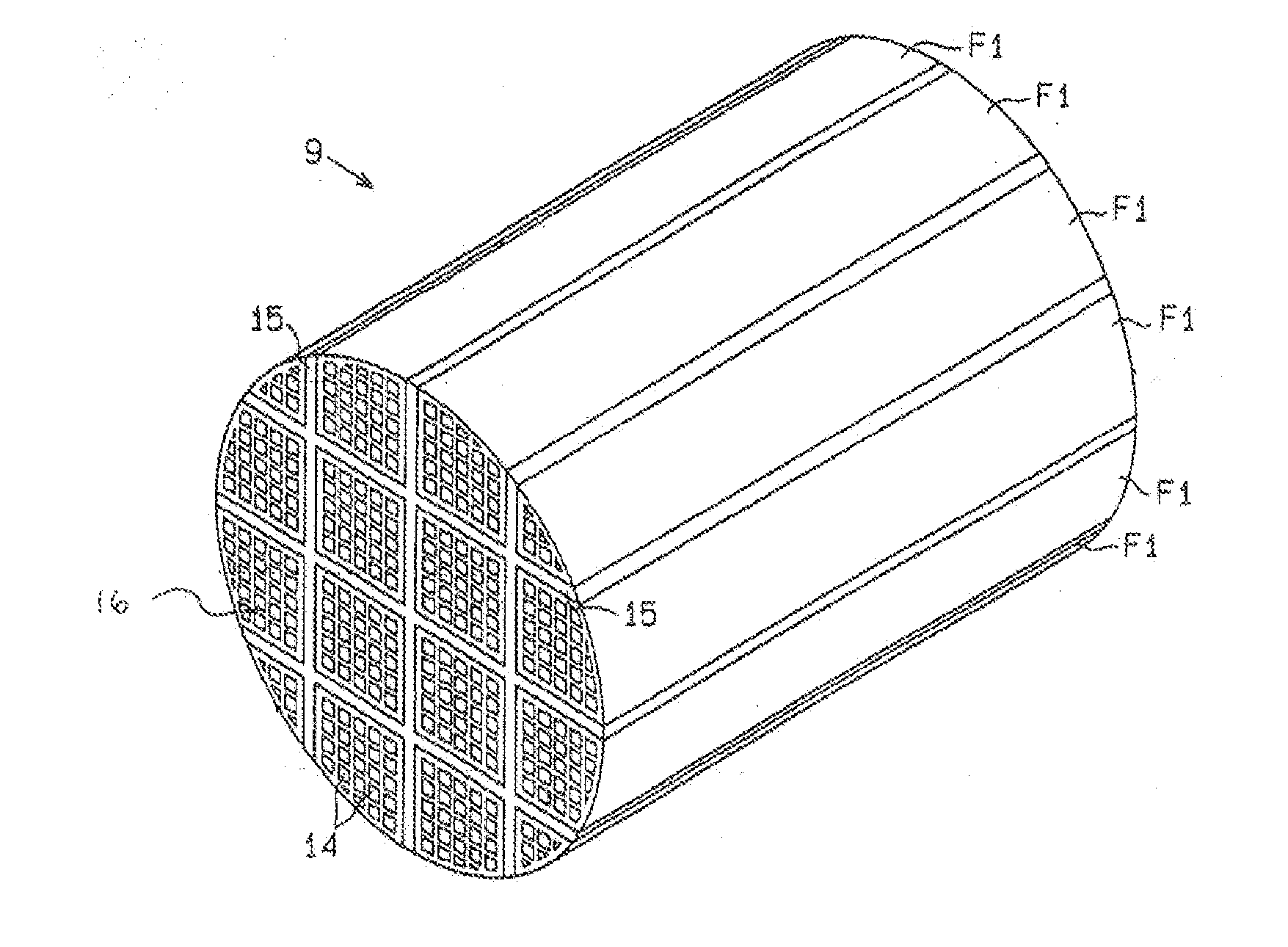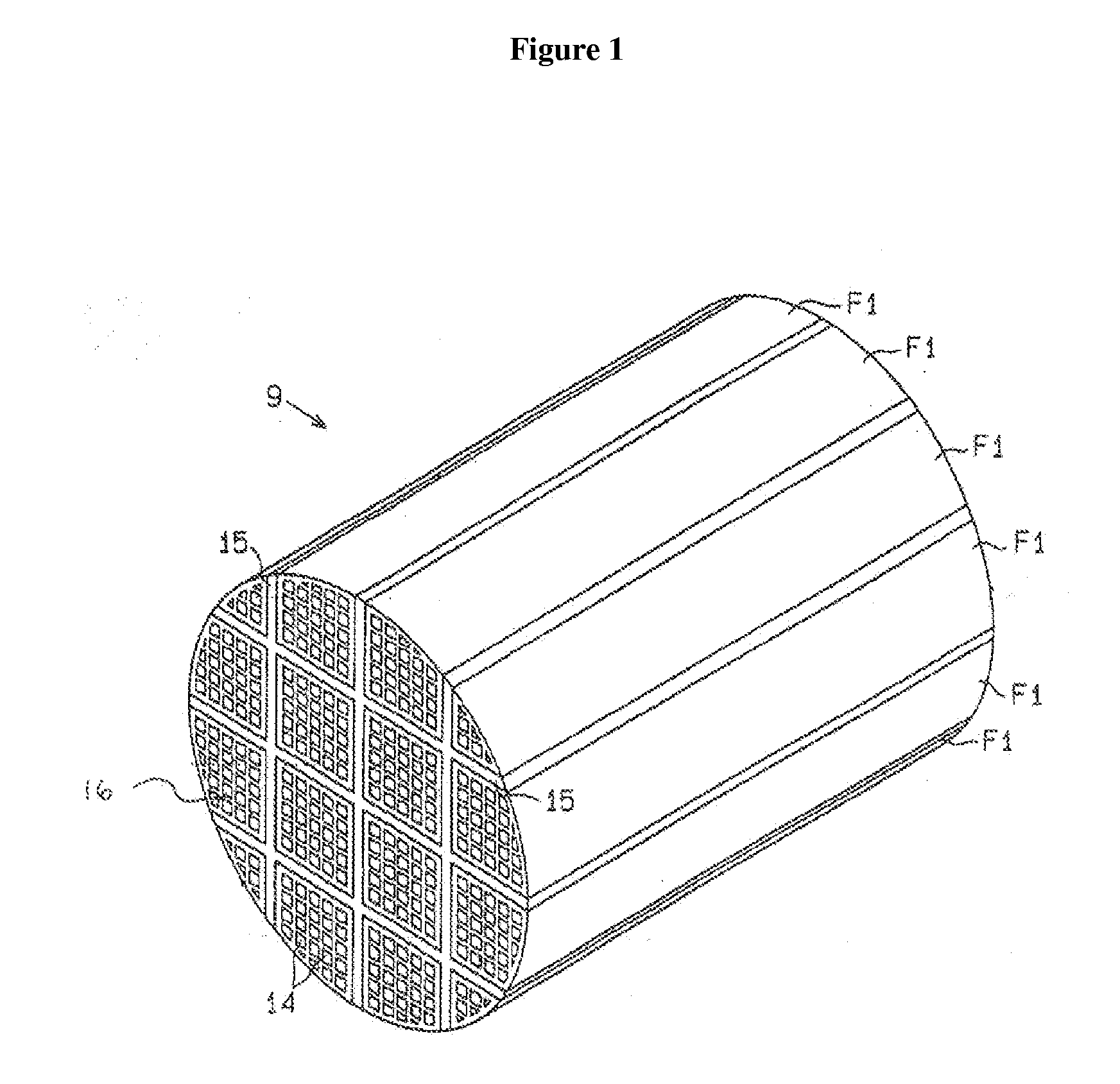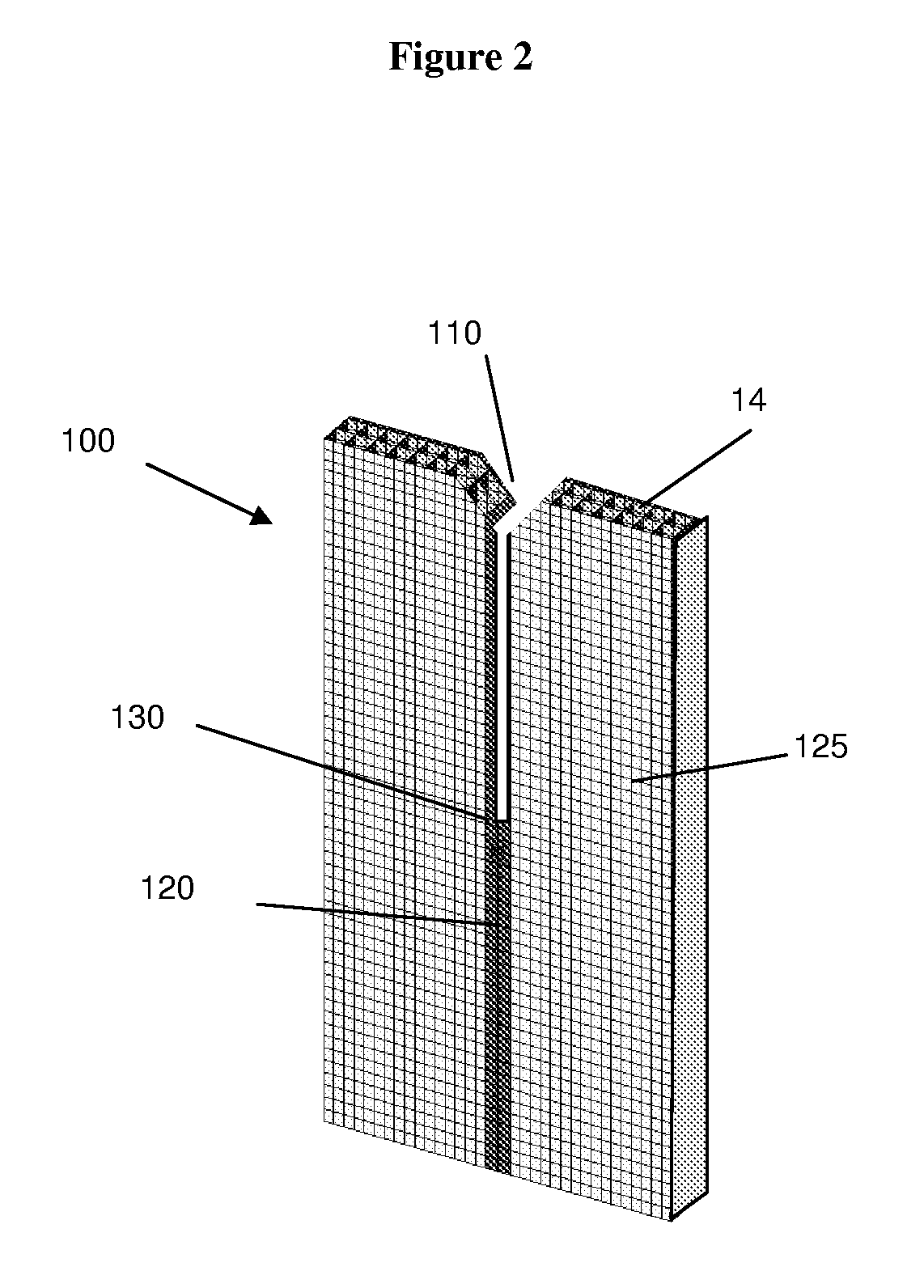Cement to make thermal shock resistant ceramic honeycomb structures and method to make them
a honeycomb structure and ceramic technology, applied in the field of ceramic filters, can solve the problems of reducing effectiveness, cracking of filters, and problems in cement use, and achieve the effects of improving dimensional tolerance, thermal shock resistance, and improving thermal shock resistan
- Summary
- Abstract
- Description
- Claims
- Application Information
AI Technical Summary
Benefits of technology
Problems solved by technology
Method used
Image
Examples
example 1
[0071]Cement was prepared by mixing 30.0% by weight of 300 micrometer agglomerates of a mullite precursor, (Component A), 14.74% by weight of graphite available from Cumming Moore Carbon Inc., Detroit, Mich. under the tradename A625 having a average particle size of about 30 micrometers (Component B), 7.89% by weight attrited alumina and clay (Component C), 1.05% by weight of a cellulose ether binder METHOCEL A4M (available from The Dow Chemical Company, Midland Mich.) (Component D) and 46.32% of water.
[0072]The attrited mixture of Component C was made using 53% by weight of Todd Dark ball clay (from Kentucky Tennessee Clay Company), 44% by weight of kappa alumina from Selecto Inc. Suwanee, GA and 3% talc MB-50-60 from Whitaker-Clark-Daniel Inc. The powders were milled for 3 hours using laboratory attritor (available from Union Process Inc. Akron, Ohio) at 500rpm using 5 mm yttrium Stabilized Zirconia balls in a 500 ml container. The attrited powder had an average particle size betw...
PUM
| Property | Measurement | Unit |
|---|---|---|
| porosity | aaaaa | aaaaa |
| porosity | aaaaa | aaaaa |
| porosity | aaaaa | aaaaa |
Abstract
Description
Claims
Application Information
 Login to View More
Login to View More - R&D
- Intellectual Property
- Life Sciences
- Materials
- Tech Scout
- Unparalleled Data Quality
- Higher Quality Content
- 60% Fewer Hallucinations
Browse by: Latest US Patents, China's latest patents, Technical Efficacy Thesaurus, Application Domain, Technology Topic, Popular Technical Reports.
© 2025 PatSnap. All rights reserved.Legal|Privacy policy|Modern Slavery Act Transparency Statement|Sitemap|About US| Contact US: help@patsnap.com



